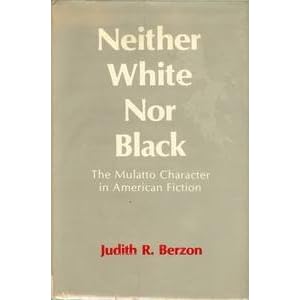Experiences and Processes Affecting Racial Identity Development: Preliminary Results From the Biracial Sibling ProjectPosted in Articles, Family/Parenting, Identity Development/Psychology, Media Archive, United States on 2011-09-21 00:44Z by Steven |
Cultural Diversity & Ethnic Minority Psychology (formerly Cultural Diversity and Mental Health)
Volume 4, Issue 3, August 1998
Pages 237-247
DOI: 10.1037/1099-9809.4.3.237
Examined what drives the process of racial identity development in general for persons of mixed racial heritage and what experiences account for some differential choices within the same family. 20 sibling pairs of mixed racial heritage (aged 18–40 yrs) completed packets including an extensive background questionnaire, a body image inventory, a racial resemblance inventory, a sibling racial resemblance inventory, a brief mental health inventory, a racial experiences inventory, and an identity questionnaire. Ss also participated in two 2-hr interviews. Four types of experiences surfaced that appear to influence the identity process: hazing, family dysfunction, other salient identities, and the impact of integration. These experiences were explored within the framework of the ecological model of racial identity development.
For centuries the United States has followed rules of hypodescent, or more colloquially, the “one-drop” rule for racial classification. This rule, implicitly embedded in racial identity theories, is challenged by changes in the contemporary population in which visible cohorts of persons of mixed heritage exist who do not strictly adhere to the one-drop rule.
Anecdotally, in the models of racial identity that have guided psychological understanding of racial awareness for two decades, persons assigned to the same racial grouping, whether they be siblings or strangers, use labels signifying their location within a single racial group. In contrast, anecdotal information on siblings of racially mixed heritage suggest they often racially or ethnically identify themselves differently from one another. At conferences dedicated to the theme of multiraciality, this difference is often the topic of discussion, with some individuals saying that each of three or four siblings identifies differently. Is this due to stage of racial identity development? Can gender explain these differences? Does phenotype explain the difference? Does birth order explain differences?
These questions offer a range of explanations and hypotheses about these differences, suggesting that this phenomenon of different racial identities among siblings in the same family would likely be complex. Studies of persons of mixed-race heritage already suggest some counterintuitive findings, and misunderstood findings. For example, phenotype does not determine how people identify themselves (Hall, 1980), though it may certainly predict some experiences one is more likely to have. Hall also found that gender alignment between a child and parent (i.e., mothers and daughters or fathers and sons) did not predict the identity label used by young Black Japanese adults in her study. Other researchers have found that identity can change over the lifetime in a way that does not necessarily reflect a stage process (Root, 1990). Racial identity can be very situational, not necessarily reflecting an ambivalence (Stephan, 1992). And the contemporary cohort of racially mixed young adults, more than at any other point in history, is asserting a racially mixed identity. This assertion, however, is generally misunderstood to reflect a racial hatred of self, a desire to be White, or a personality that is opportunistic. Rather than these explanations being derived from conventional lore, many of these individuals are subverting monoracial paradigms (Daniel, 1992), refusing to adhere to the irrational racial rules of this country (Spickard, 1992), or contextualizing racial identity. An identity choice is possible amid a growing number of mixed-race people in the post-civil rights era. Without most people’s ability to experience the insider perspective on being of mixed parentage, a monoracial framework is usually the guide for interpretation of behavior and process…
Read the entire article here.

